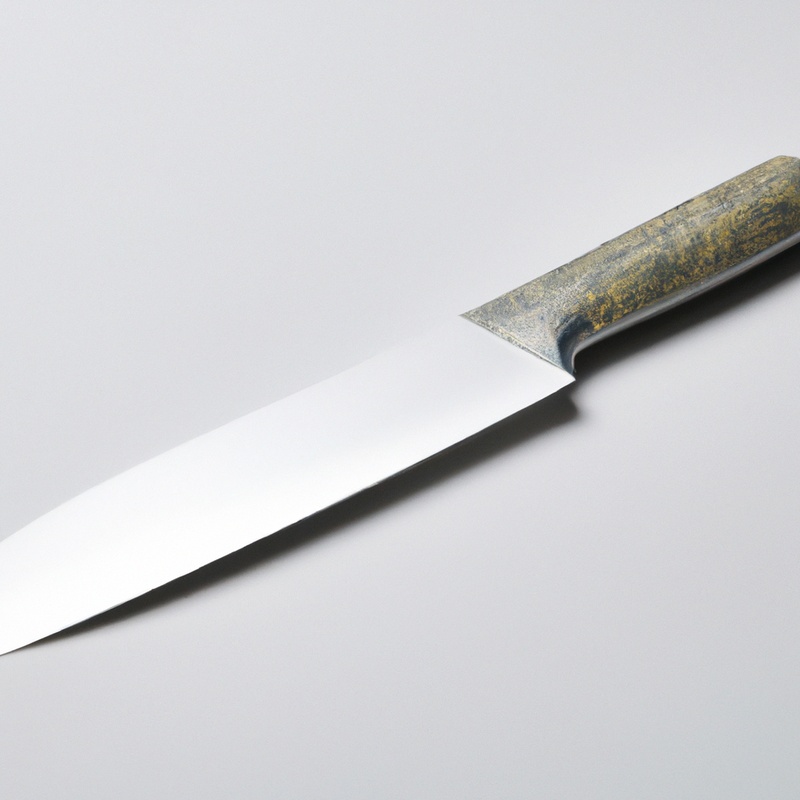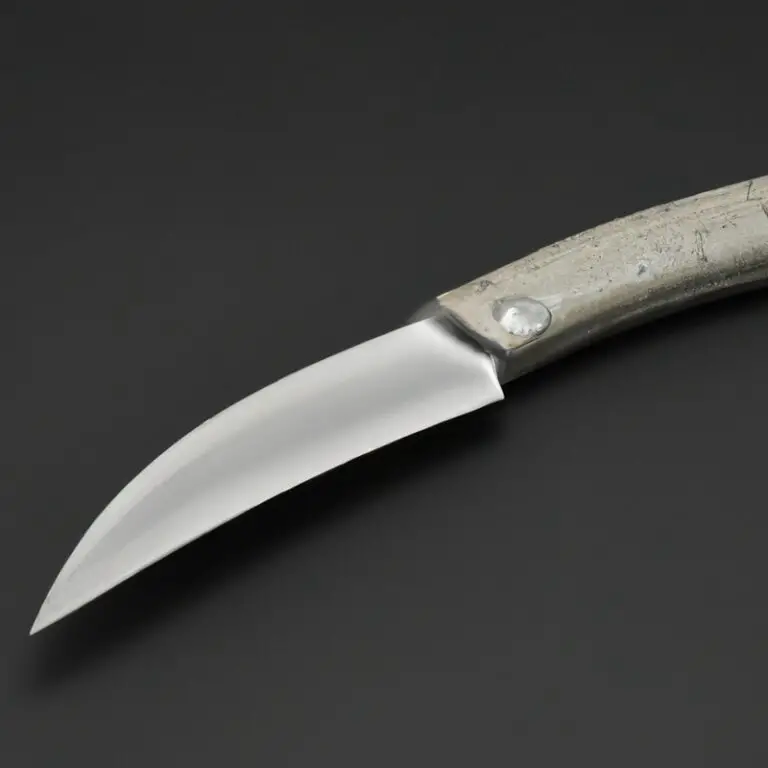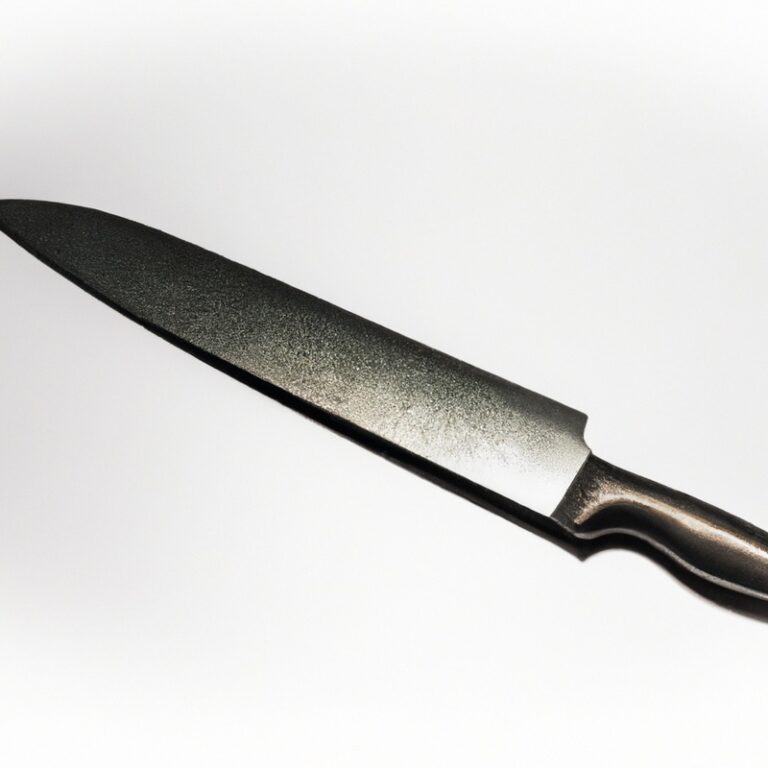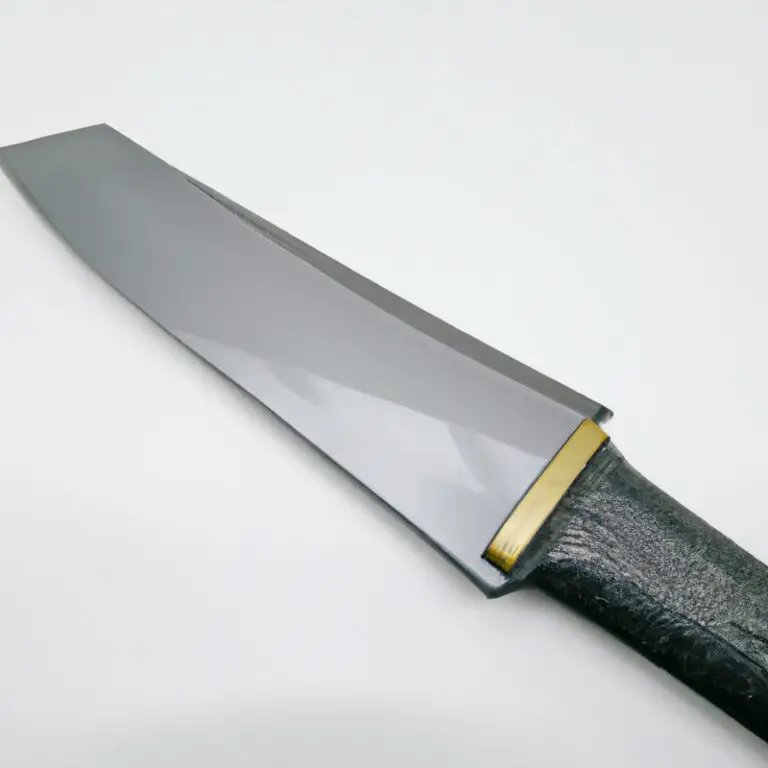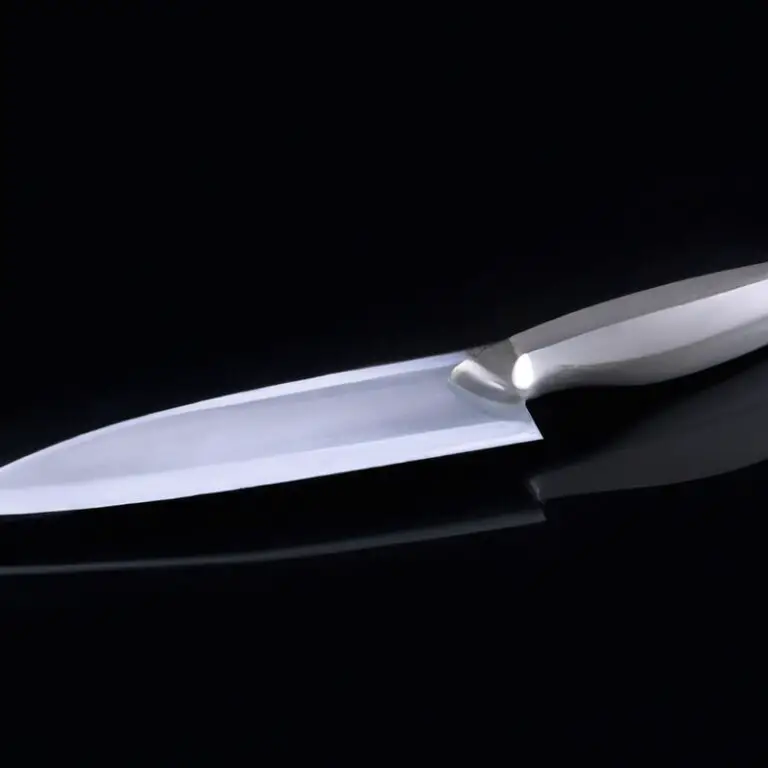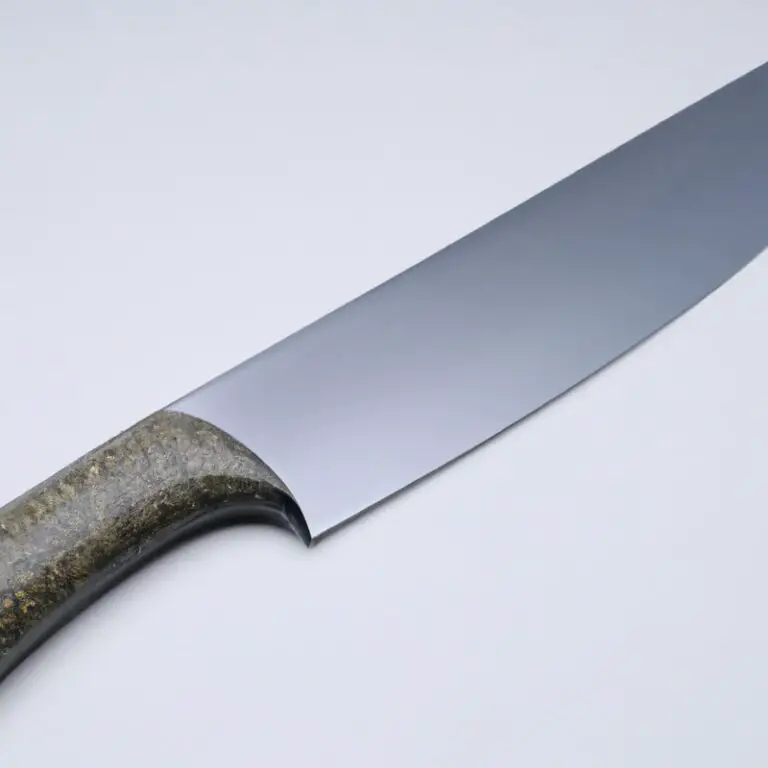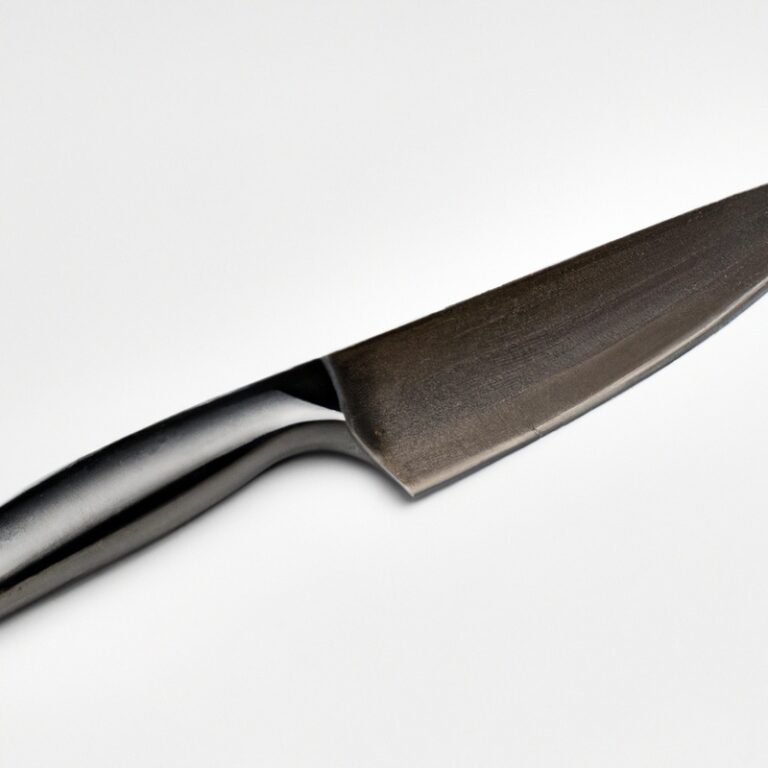How To Avoid Accidents While Using a Gyuto Knife? Stay Safe!
Key Takeaways:
- Always ensure that the blade is sharp to prevent slip-ups and loss of control while using a Gyuto knife.
- Proper handling and grip of the knife are crucial to avoid accidents, so make sure to hold it firmly and at the right angle.
- Use a cutting board and avoid unstable surfaces to prevent the knife from slipping and causing injuries.
- Never rush and take the time to plan your cuts to reduce the risk of accidents while using a Gyuto knife.
Are you tired of accidents while using a Gyuto knife? Fear not because you’re not alone.
Many beginners face this challenge, but with the right guidance, you can be on your way to safe Gyuto knife handling.
As someone who has had their fair share of mishaps, I’ve compiled essential safety tips and techniques that have proved effective. In this article, I’ll share how to avoid common mistakes, handle and grip your Gyuto knife correctly, cut different foods, and so much more.
So, let’s dive right in and make your kitchen a safer place to be.
| Tip | Description |
|---|---|
| Hold the Knife Properly | Ensure that the handle of the knife is firmly gripped by your dominant hand with your thumb and index fingers gripping the handle at the base of the blade. Your remaining three fingers should be wrapped around the handle for support. |
| Keep Your Work Area Clean and Organized | Make sure you have enough space while using the knife and keep your cutting board free of clutter. This helps to reduce the chance of the knife slipping and prevents accidental cuts from debris. |
| Pay Attention to Your Fingers | Be mindful of where your fingers are positioned in relation to the knife blade. Never rest your fingers on the top of the blade. Keep your fingers away from the blade’s path and use a claw grip on the food being cut. |
| Use a Sharp Knife | A dull knife is not only more difficult to use, but it’s also more dangerous. When the blade is dull, it can easily slip and cause an accident. A sharp knife is more precise and requires less force to cut through food, thereby reducing the likelihood of an injury. |
| Be Careful When Washing and Storing the Knife | Never put a knife in a dishwasher as the abrasive nature of the detergent can damage the blade and handle. Wash the knife by hand with mild soap and water, and store it in a knife block or on a magnetic strip to prevent accidental cuts. |
Essentials of safe Gyuto knife handling for beginners
Ensuring safe handling of a Gyuto knife is crucial, especially when you’re a beginner. Here are some essentials to keep in mind:
- Choose the right Gyuto knife and ensure it has proper safety features.
- Hold and grip the knife properly by tucking your fingers in and placing your thumb on the handle’s back.
- Keep your knife sharp and maintain it regularly.
- Follow proper cutting techniques and avoid common mistakes, such as applying too much pressure or using the wrong cutting angle.
- Take caution when using the knife around others and keep it out of the reach of children.
- Understand the risks associated with using a Gyuto knife and know what to do in case of an accident.
By following these guidelines, you’ll be able to handle your Gyuto knife safely and avoid any accidents.
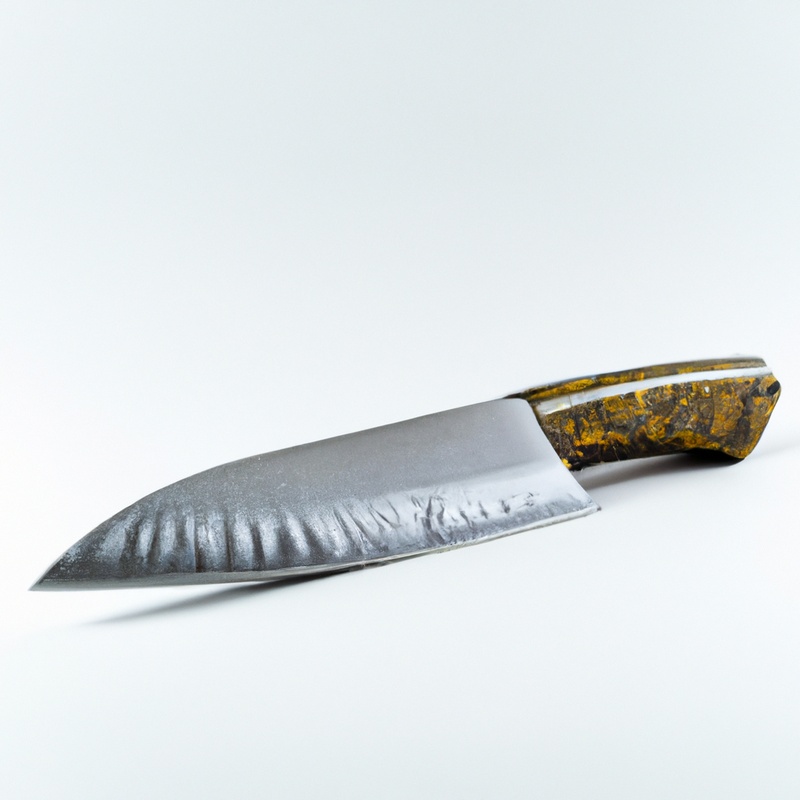
Types of Gyuto knives and their safety features
There are various types of Gyuto knives available, and each of them has different features and safety measures. Some of the common types include:
- Carbon steel: It’s sharp and durable but requires regular maintenance, so it doesn’t corrode or rust.
- Stainless steel: It’s rust-resistant and easy to maintain. However, it may require more sharpening than carbon steel.
- VG10 steel: It’s a premium quality steel used in high-end Gyuto knives. It’s long-lasting, sharp, and easy to maintain.
- Full-tang: It’s a type of knife where the blade runs through the handle, making it more balanced and stable. It’s also less prone to accidents.
- Handle grip: A good quality handle grip is essential as it provides a comfortable and secure grip. Wooden handles are popular, but some people prefer synthetic materials like G10 or Micarta.
When choosing a Gyuto knife, it’s important to consider your specific needs and preferences. Ensure that the blade is sharp and balanced, the handle is comfortable and provides a secure grip.
Always follow the manufacturer’s safety recommendations and use the knife with caution to avoid accidents.
Proper technique for holding and gripping a Gyuto knife
Proper technique for holding and gripping a Gyuto knife is crucial for safe usage. Follow these steps for secure handling of your Gyuto knife:
- Hold the handle of the knife firmly with your dominant hand and tuck the thumb of your other hand behind your index finger.
- Keep your fingers and thumb curled slightly inward towards the handle.
- Place your index finger on the spine of the knife for better control and precision.
- Keep your wrist straight and your forearm close to the blade.
- Cut in a gentle, controlled motion, and avoid excess force or speed.
Keeping these tips in mind while using a Gyuto knife will ensure safe and efficient usage.
How to maintain a sharp and safe Gyuto knife
To maintain a sharp and safe Gyuto knife, follow these tips:
- Regularly sharpen your knife using a sharpening stone or honing rod to keep the blade’s edge sharp.
- Keep the blade dry and clean it immediately after use to avoid rusting.
- Store your Gyuto knife in a knife block or sheath to protect the blade and prevent accidents.
- Avoid using the knife on hard surfaces like ceramic plates or cutting boards, which can dull the blade quickly.
- Don’t twist, bend or apply too much pressure on the knife’s blade as it increases the risk of breaking or chipping the blade.
- Use the appropriate cutting board for your knife; for example, a wooden cutting board is ideal for Gyuto knives.
- Avoid cutting frozen foods or bones with a Gyuto knife as it can damage the blade and cause accidents.
By following these maintenance tips, you can maintain a sharp and safe Gyuto knife and prevent accidents.
How to cut different foods with a Gyuto knife
When it comes to cutting different foods with a Gyuto knife, there are a few things to keep in mind. First, always make sure your knife is sharp.
A dull blade requires more force to cut through food, increasing the likelihood of accidents.
For softer foods like vegetables and fruits, use a sawing motion to avoid crushing them. For firmer foods like meats and root vegetables, use a rocking motion to slice through them.
When cutting round foods like onions or potatoes, cut a flat surface first to create a stable base.
For herbs, use a gentle slicing motion to avoid bruising them. It’s also important to use a cutting board that is stable and won’t move around while you’re cutting.
This will help prevent your knife from slipping and causing an accident.
Remember to always use caution and pay attention to your technique when cutting different foods with a Gyuto knife. With practice and proper handling, you’ll be able to cut through various foods confidently and safely.
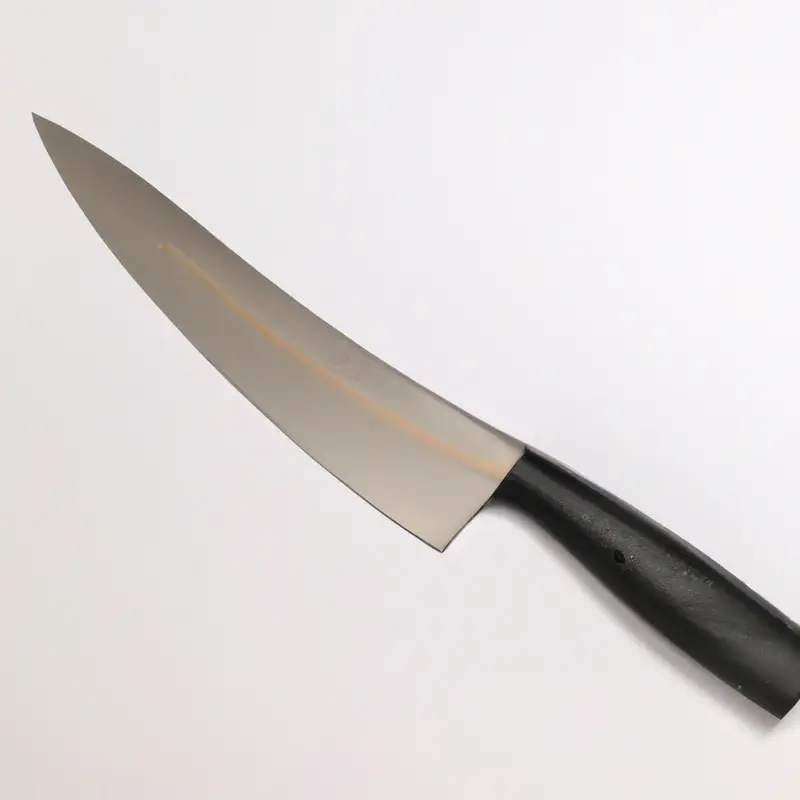
Avoiding common mistakes when using a Gyuto knife
To avoid accidents and ensure safe use of a Gyuto knife, it is crucial to avoid common mistakes. Some of the common errors to avoid include gripping the knife too tightly or loosely, using the wrong cutting technique, and using a dull or damaged blade.
Always hold the knife firmly but not too tightly, using a pinch grip to maintain control.
Use a proper cutting technique, keeping your fingers and thumb tucked in behind the blade. Always use a sharp blade, as a dull blade can slip and cause accidents.
Additionally, avoid cutting on unstable surfaces or towards your body and never leave the knife unattended or within reach of children.
By avoiding these mistakes, you can ensure safe and effective use of your Gyuto knife.
Precautions to take when using a Gyuto knife around others
When using a Gyuto knife around others, it is essential to take precautions to prevent accidents. Here are some safety measures to consider:
- Always inform others that you are using a sharp knife.
- Make sure that there is enough space to move when you are slicing or chopping.
- Use a cutting board to prevent the knife from slipping, and never cut directly on a surface that could be damaged.
- Keep the knife away from the edge of the workspace to prevent it from accidentally falling or being knocked off.
- Never hand the knife to someone else directly, instead place it on the counter for them to pick up.
- Avoid distractions when using the knife and stay focused.
- Never leave the knife unattended or let children handle it.
By following these precautions, you can reduce the risk of accidents when using a Gyuto knife around others.
Understanding the risks associated with a Gyuto knife
Gyuto knives are sharp and can cause serious injuries if not handled properly. When using a Gyuto knife, it’s crucial to understand the risks associated with it.
Some of the risks include accidentally cutting yourself or others, damaging the blade or handle due to improper handling, and leaving the knife unattended, making it easily accessible to children or pets.
In addition, using a dull Gyuto knife can also increase the risk of accidents. A dull blade can slip off the food or become stuck, causing the user to put more force on the knife, leading to injuries.
To avoid risks when using a Gyuto knife, it’s important to invest in a high-quality knife with a sturdy handle and a sharp edge.
It’s also essential to follow proper techniques and grip the knife correctly, ensuring that it doesn’t slip out of your hand. Furthermore, it’s crucial to always keep the knife clean and sharpened regularly.
Avoid leaving it unattended or in an accessible area and use protective covers or storage boxes to prevent accidental cuts.
In case of an accident, be prepared to respond quickly and appropriately. Seek medical attention right away and properly dispose of the contaminated items to avoid infection.
By understanding the risks associated with a Gyuto knife and implementing proper safety measures, you can enjoy using this versatile tool without endangering yourself or others.
What to do in case of an accident with a Gyuto knife
In case of an accident with a Gyuto knife, it’s important to act quickly to reduce the severity of the injury. Here’s what to do:
- Stop the bleeding: Apply direct pressure to the wound with a clean cloth or piece of gauze.
- Clean the wound: Rinse the wound with clean water and apply an antiseptic solution to reduce the risk of infection.
- Seek medical attention: If the cut is deep or the bleeding doesn’t stop after 10 minutes of direct pressure, seek medical attention immediately.
- Follow up with your doctor: Even if the wound seems minor, it’s important to follow up with your doctor to ensure it’s healing properly and to receive any necessary treatment.
Remember, prevention is key. Always use proper technique and take precautions when handling a Gyuto knife to avoid accidents.
The importance of regular cleaning and maintenance for a Gyuto knife
Regular cleaning and maintenance for a Gyuto knife is an essential part of safe knife handling. A dull or dirty knife can slip while cutting, causing accidents.
Over time, moisture and humidity can damage the blade, leading to rust and corrosion.
Therefore, it is crucial to keep the knife clean and dry after each use and store it properly. It is recommended to clean the knife with warm soapy water and dry it thoroughly with a clean cloth.
Avoid using abrasive or harsh cleaning agents, as they can damage the blade’s surface.
Sharpen the blade regularly with a sharpening stone or honing rod, and make sure the blade is at the correct angle. A blunt knife requires more force to cut, making it unsafe.
Proper care and maintenance of the Gyuto knife also extend its useful life and help maintain its performance.
It is essential to store the knife in a dry place and avoid exposing it to moisture or humidity. A knife block or a magnetic knife rack is a great way to keep the knife safe and easily accessible.
In summary, regularly cleaning and maintaining your Gyuto knife not only keeps it sharp and safe to use but also prolongs its useful life.
It is a crucial aspect of safe knife handling, and neglecting it can lead to accidents and damage to the knife. So, always keep your Gyuto knife clean, dry, and sharpened to ensure a safe and efficient cutting experience.
Final Verdict
Mastering the art of safe Gyuto knife handling is essential for any beginner chef. By understanding the types of Gyuto knives, proper gripping techniques, and maintenance practices, you can avoid common mistakes and reduce the risk of accidents.
Always take precautions when using your Gyuto knife around others and understand the risks involved to ensure a safe cooking environment.
Remember to stay vigilant and take immediate action in case of an accident. Regular cleaning and maintenance are a necessary part of ensuring your Gyuto knife stays sharp and safe to use.
By following these guidelines, you can confidently and safely add this versatile tool to your culinary arsenal.
Happy cooking!

